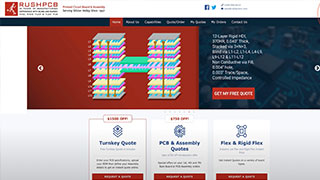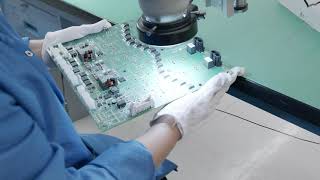| Surface Finish | Process Description |
| HASL (Hot Air Solder Leveled) Leaded Solder | The process deposits leaded solder on PCB features that Solder Mask has left uncovered. Solder thickness may vary from 0.2 mils to 1.2 mils. The variation depends on the density of circuit board. Solder is 63%/37% eutectic Tin/Lead. |
| HASL (Hot Air Solder Leveled) Lead-Free Solder | The process deposits lead-free solder on PCB features that Solder Mask has left uncovered. |
| OSP (Organic Solderability Preservative) | The process deposits a transparent organic coating on PCB features that Solder Mask has left uncovered. |
| ENIG (Electroless Nickel/Gold) | The process deposits Electroless nickel and Electroless Gold on PCB features that Solder Mask has left uncovered. Nickel thickness is typically 100 to 150 micro inches and thickness of Gold from 2 to 3 micro inches. |
| Gold Flash | The process deposits Electrolytic Nickel-Gold on PCB features that Solder Mask has left uncovered. Typical thickness of Nickel is 150 to 200 micro inches, and Hard Gold 5 to 10 micro inches. Application of Gold flash on features follows Copper plating. |
| Immersion Silver | The process deposits Silver on PCB features that Solder Mask has left uncovered. Thickness of silver is typically 4 to 20 micro inches. |
| White Tin | The process deposits Immersion Tin on PCB features that Solder Mask has left uncovered. Thickness of Tin is typically 30 to 40 micro inches. |
| Carbon Ink for Key pad application | The process applies a conductive carbon paste on selective pads for contact purposes, e.g. Keypads of calculators, etc. |
| Wire Bondable Soft Gold | The process deposits Electrolytic soft Gold on features that require bondable Gold for applications of wire bonding. Depending on the type of wire bonding necessary, the thickness of the Gold layer varies from 20 to 50 micro inches. Nickel thickness is typically between 150 and 250 micro inches. |
Certifications





